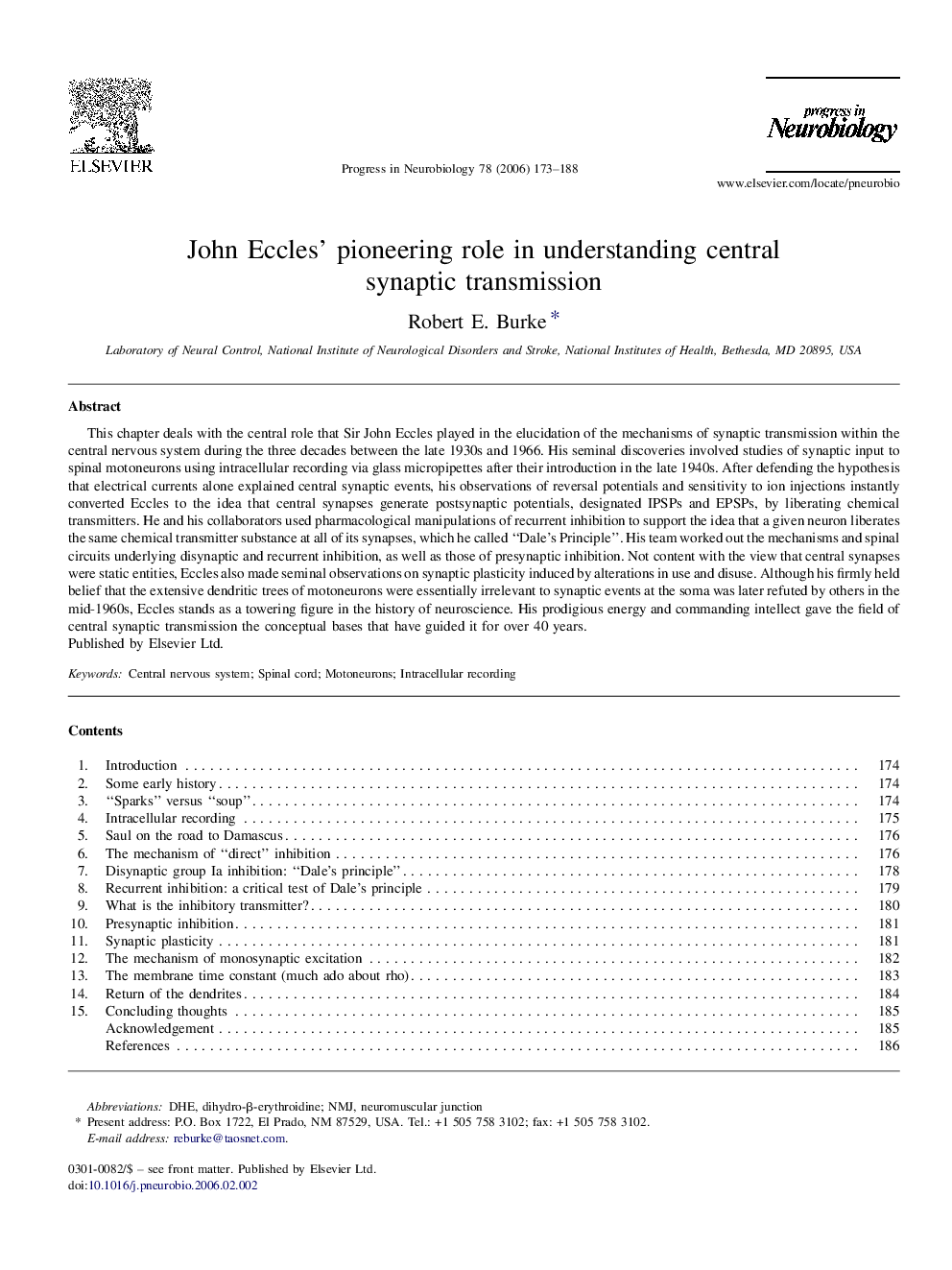| Article ID | Journal | Published Year | Pages | File Type |
|---|---|---|---|---|
| 4354063 | Progress in Neurobiology | 2006 | 16 Pages |
This chapter deals with the central role that Sir John Eccles played in the elucidation of the mechanisms of synaptic transmission within the central nervous system during the three decades between the late 1930s and 1966. His seminal discoveries involved studies of synaptic input to spinal motoneurons using intracellular recording via glass micropipettes after their introduction in the late 1940s. After defending the hypothesis that electrical currents alone explained central synaptic events, his observations of reversal potentials and sensitivity to ion injections instantly converted Eccles to the idea that central synapses generate postsynaptic potentials, designated IPSPs and EPSPs, by liberating chemical transmitters. He and his collaborators used pharmacological manipulations of recurrent inhibition to support the idea that a given neuron liberates the same chemical transmitter substance at all of its synapses, which he called “Dale's Principle”. His team worked out the mechanisms and spinal circuits underlying disynaptic and recurrent inhibition, as well as those of presynaptic inhibition. Not content with the view that central synapses were static entities, Eccles also made seminal observations on synaptic plasticity induced by alterations in use and disuse. Although his firmly held belief that the extensive dendritic trees of motoneurons were essentially irrelevant to synaptic events at the soma was later refuted by others in the mid-1960s, Eccles stands as a towering figure in the history of neuroscience. His prodigious energy and commanding intellect gave the field of central synaptic transmission the conceptual bases that have guided it for over 40 years.
